Via Pinterest

via pinterest
More Posts from Teddyglez1976 and Others
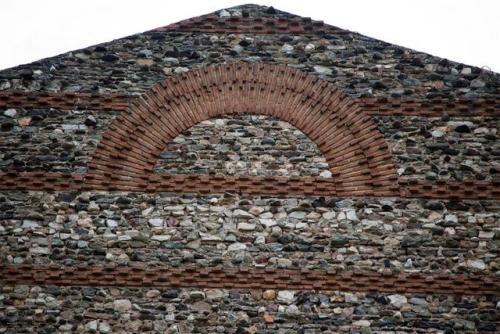
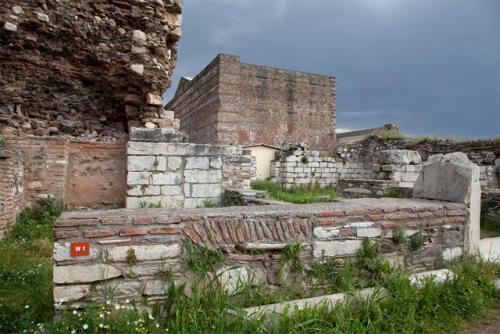
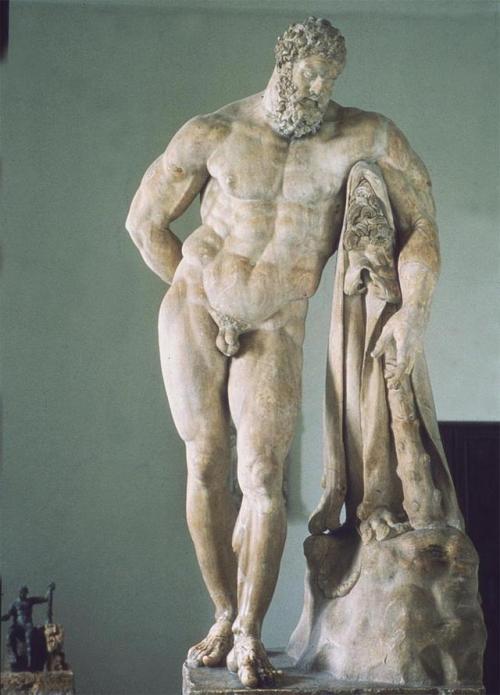
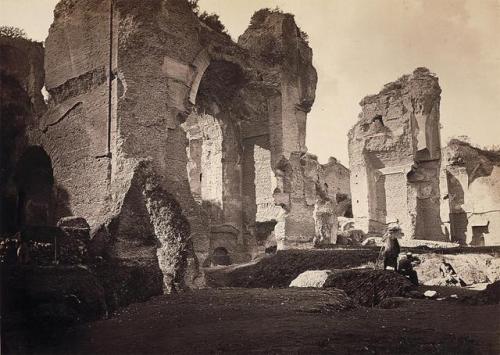
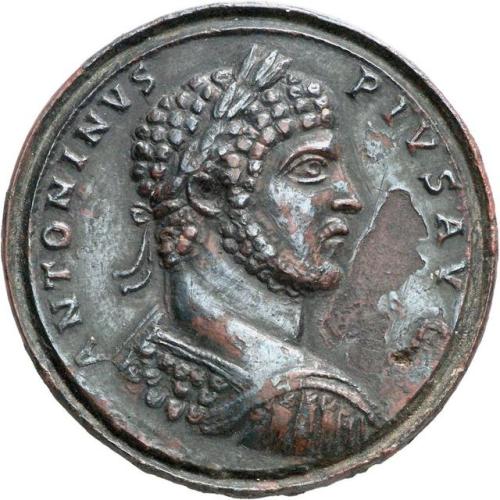
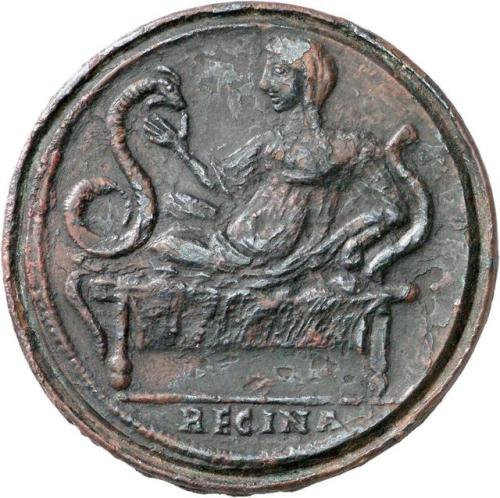

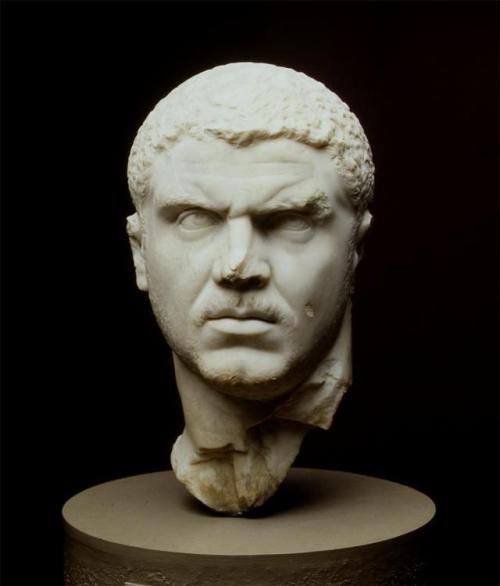
By Jean Marie Carey
Caracalla (born Marcus Aurelius Antoninus in 188), was assassinated on 8 April 217, after nearly 20 years as one of the most reviled Roman emperors. Caracalla had a career of drastic purges and murders, having his numerous real and perceived enemies executed, including his brother Geta in 211. To placate Roman soldiers, he doubled the inheritance tax paid only by citizens.
In 213 he fought the Alamanni and became Germanicus Maximus. Obsessed by Alexander the Great, he raised a Macedonian phalanx and went east in his footsteps, through Asia and Syria to Alexandria, where large numbers who had mocked him were killed. When his offer to marry a Parthian princess was rejected, he attacked Media. While preparing a further campaign he was murdered near Carrhae.
Caracalla oversaw numerous aggrandizing projects. Geta and Caracalla commissioned the construction of the Gymnasium Complex in Sardis, Turkey, which was in use until and through the early Byzantine period. The gymnasium was a huge construction located next to the synagogue in Sardis. The large area adjoining the synagogue on the north was the gymnasium’s palaestra. The eastern facade of the baths was restored between 1964 and 1973.
Caracalla had an equally sumptuous thermae built in Rome, decorated with original Greek sculptures, ornaments, and architectural elements. Because of his notoriety, the emperor was a popular subject, despite a decree of damnatio memoriae, for contemporary and also later artists. Coins bearing his likeness are highly collectible.
Reference: Anthony R. Birley. “Aurelius (RE 46) Antoninus (1), Marcus.” In The Oxford Classical Dictionary.: Oxford University Press, 2012. http://www.oxfordreference.com/view/10.1093/acref/9780199545568.001.0001/acref-9780199545568-e-986.
Gymnasium Complex, ca. 161-211; ruined circa 7th century; baths restored 1964-1973. Sardis, Turkey. Nr.s R50630177and R50630430. Shmuel Magal, Sites and Photos.
Herakles Farnese, Roman copy of a Greek original 330-320 BCE. Recovered from Baths of Caracalla, Rome, now in Museo nazionale di Napoli
Gioacchino Altobelli, Ruins of the Thermae of Caracalla, albumen print photographs, ca. 1865. George Eastman House, Rochester, New York.
Denarius with Caracalla (Spätrömischer Kontorniat), ca. 200. Münzkabinett, Staatliche Museen zu Berlin, Nr. 92.073.
Bull rhyton (black steatite; wooden horns originally gilded) from Crete: Second Palace Period. ca. 1400 BCE. From the Roman Baths of Caracalla. The Archive for Research on Archetypal Symbolism, Nr. 18082.
Portrait head of the Emperor Marcus Aurelius Antoninus (called Caracalla), ca. 230. The Metropolitan Museum of Art. Nr. 40.11.1a.
Further Reading: Janet DeLaine. The Baths Of Caracalla: A Study In The Design, Construction, and Economics of Large-Scale Building Projects In Imperial Rome. Portsmouth, Rhode Island: Journal of Roman Archaeology, 1997.
Clare Rowan. Under Divine Auspices: Divine Ideology and the Visualisation Of Imperial Power In The Severan Period. Cambridge: Cambridge University Press, 2012.

Gustave Moreau, 1826-1898
Hélène, n/d, gouache and watercolor on paper, 52x25 cm
Private Collection

The Reading Lesson. Knut Ekwall (Swedish, 1843-1912). Oil on canvas.
While the father reads and the child in the foreground is writing, the mother is providing instruction on reading to the other children.

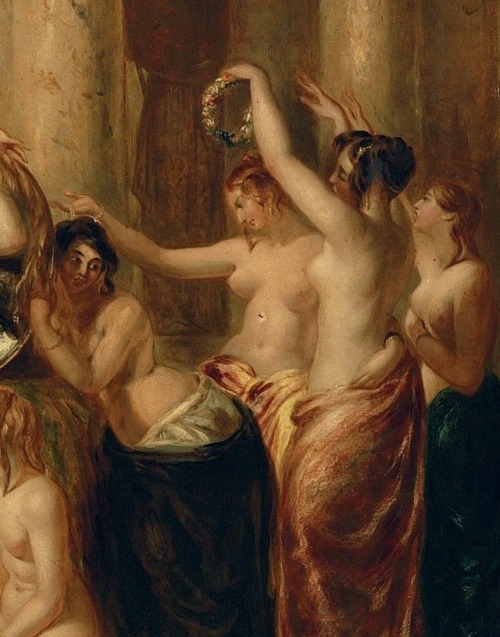
Details from Venus and Her Satellites, 1835.
William Etty (British, 1787-1849)
Oil on panel

Newspaper Reading (1855). Reinhard Sebastian Zimmermann (German, 1815-1893). Oil on canvas.
A young woman reads a newspaper, perhaps to her father and dog, in a nicely appointed interior. The man holds what may be a snuff box. Both man and dog are very attentive to the news being read. Books sit on the desk to the rear.
Nada se le iguala al exquisito olor a pan recién horneado.

La Panadería ♡
Demo-1: What’s the Deal?
Whether or not you caught the SpaceX Crew Dragon launch this past weekend, here’s your chance to learn why this mission, known as Demo-1, is such a big deal.
The First of its Kind
Demo-1 is the first flight test of an American spacecraft designed for humans built and operated by a commercial company.
Liftoff

The SpaceX Crew Dragon lifted off at 2:49 a.m. EST Saturday, March 2, on the company’s Falcon 9 rocket from Kennedy Space Center.
This was the first time in history a commercially-built American crew spacecraft and rocket launched from American soil.
Docking the Dragon

After making 18 orbits of Earth, the Crew Dragon spacecraft successfully attached to the International Space Station’s Harmony module at 5:51 a.m. EST Sunday, March 3. The Crew Dragon used the station’s new international docking adapter for the first time since astronauts installed it in August 2016.
The docking phase, in addition to the return and recovery of Crew Dragon, are critical to understanding the system’s ability to support crew flights.
A New Era in Human Spaceflight

Although the test is uncrewed, that doesn’t mean the Crew Dragon is empty. Along for the ride was Ripley, a lifelike test device outfitted with sensors to provide data about potential effects on future astronauts. (There is also a plush Earth doll strapped inside that can float in the microgravity!)
Astronauts on the International Space Station welcomed the Crew Dragon spacecraft in a ceremony onboard. NASA Astronaut Anne McClain from inside Crew Dragon said, “Welcome to a new era in human spaceflight.”
Inside the Dragon
For future operational missions, Crew Dragon will be able to launch as many as four crew members and carry more than 220 pounds of cargo. This will increase the number of astronauts who are able to live onboard the station, which will create more time for research in the unique microgravity environment.
SpaceX and NASA

Elon Musk, CEO and lead designer at SpaceX, expressed appreciation for NASA’s support: “SpaceX would not be here without NASA, without the incredible work that was done before SpaceX even started and without the support after SpaceX did start.”
Preparation for Demo-2

NASA and SpaceX will use data from Demo-1 to further prepare for Demo-2, the crewed flight test that will carry NASA astronauts and Doug Hurley and Bob Behnken to the International Space Station. NASA will validate the performance of SpaceX’s systems before putting crew on board for the Demo-2 flight, currently targeted for July 2019.
Undocking

The Crew Dragon is designed to stay docked to station for up to 210 days, although the spacecraft used for this flight test will remain docked to the space station for only five days, departing Friday, March 8. (We will be providing live coverage — don’t miss it!)
Demo-1: So What?

Demo-1 is a big deal because it demonstrates NASA and commercial companies working together to advance future space exploration! With Demo-1’s success, NASA and SpaceX will begin to prepare to safely fly astronauts to the orbital laboratory.
Follow along with mission updates with the Space Station blog.
Make sure to follow us on Tumblr for your regular dose of space: http://nasa.tumblr.com
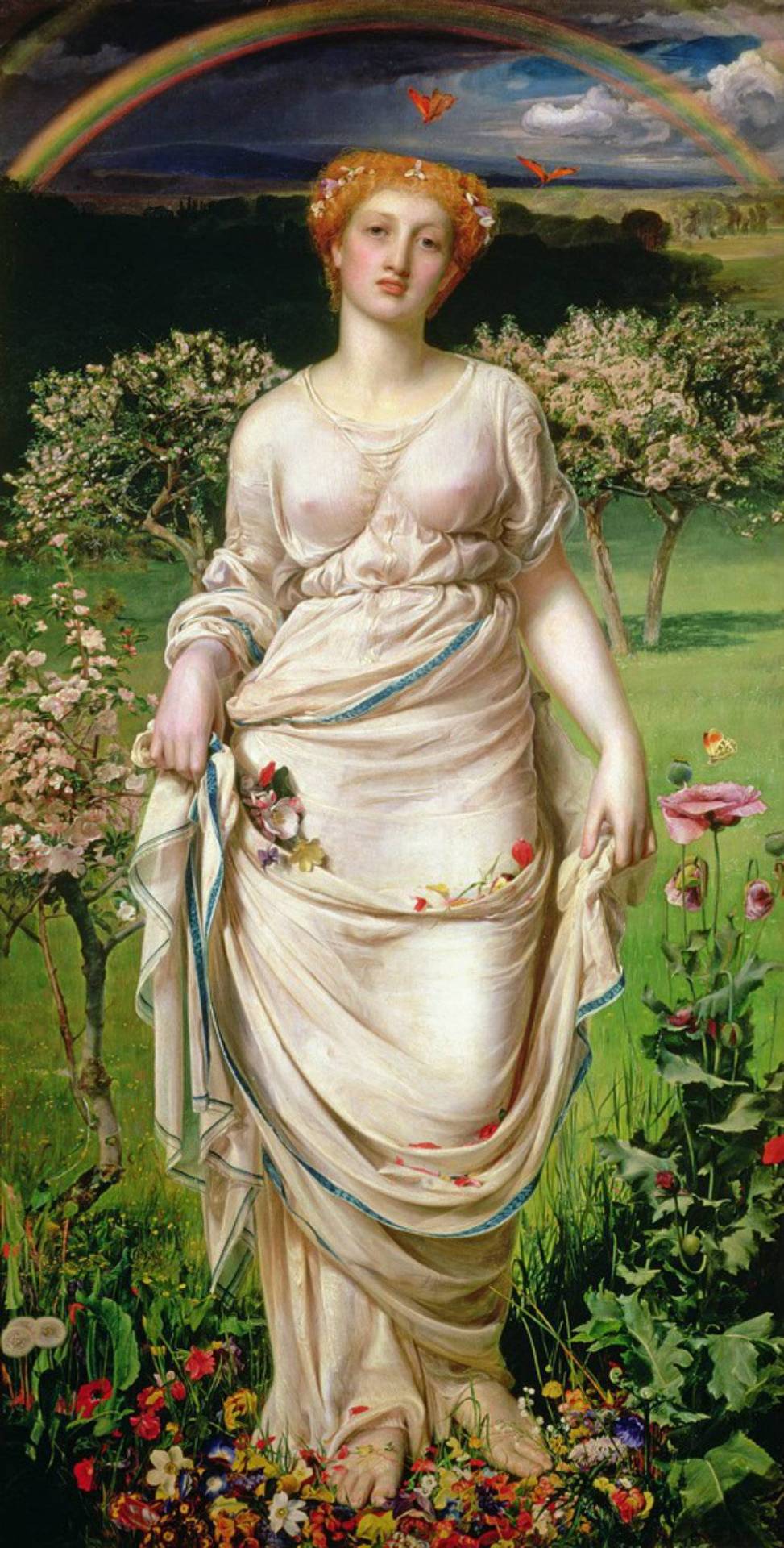
Gentle Spring (pre 1865). Frederick Sandys (English, 1829-1904). Oil on canvas. The Ashmolean Museum of Art and Archaeology. Exhibited at the Royal Academy in 1865 accompanied in the catalogue by a sonnet by the artist’s friend, Charles Algernon Swinburne. The figure was painted in the garden of the poet and novelist, George Meredith. She represents Proserpina returning from the land of the dead. Sandys joined Rossetti’s circle in 1857 and lived with him in Cheyne Walk for most of 1866.


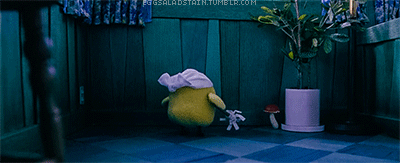
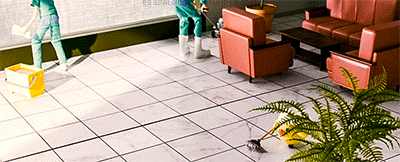
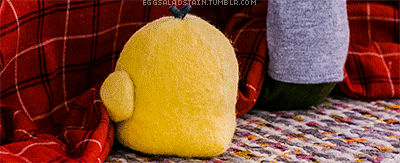


i would die for kiioritori honestly

Circle of Artemisia Gentileschi (Italian, 1593 - c. 1656): Mary Magdalene, holding a skull (via Sotheby’s)
-
 keepdeeper liked this · 6 years ago
keepdeeper liked this · 6 years ago -
 licurici70 liked this · 6 years ago
licurici70 liked this · 6 years ago -
 jeep-is-my-world reblogged this · 6 years ago
jeep-is-my-world reblogged this · 6 years ago -
 jeep-is-my-world liked this · 6 years ago
jeep-is-my-world liked this · 6 years ago -
 ginnnyo reblogged this · 6 years ago
ginnnyo reblogged this · 6 years ago -
 teddyglez1976 reblogged this · 6 years ago
teddyglez1976 reblogged this · 6 years ago -
 teddyglez1976 liked this · 6 years ago
teddyglez1976 liked this · 6 years ago -
 italianodibuongusto liked this · 6 years ago
italianodibuongusto liked this · 6 years ago -
 old-school-new-world reblogged this · 6 years ago
old-school-new-world reblogged this · 6 years ago -
 ritaso reblogged this · 6 years ago
ritaso reblogged this · 6 years ago -
 dieselwayfarer liked this · 6 years ago
dieselwayfarer liked this · 6 years ago -
 marchlake liked this · 6 years ago
marchlake liked this · 6 years ago -
 old-school-new-world reblogged this · 6 years ago
old-school-new-world reblogged this · 6 years ago -
 aeroloupos liked this · 6 years ago
aeroloupos liked this · 6 years ago -
 aeroloupos reblogged this · 6 years ago
aeroloupos reblogged this · 6 years ago -
 esperanza123 liked this · 6 years ago
esperanza123 liked this · 6 years ago -
 lolabcookies reblogged this · 6 years ago
lolabcookies reblogged this · 6 years ago -
 filoflor reblogged this · 6 years ago
filoflor reblogged this · 6 years ago -
 filoflor liked this · 6 years ago
filoflor liked this · 6 years ago -
 retro7wonder4reverie liked this · 6 years ago
retro7wonder4reverie liked this · 6 years ago -
 bears13weet liked this · 6 years ago
bears13weet liked this · 6 years ago -
 carmencita66 liked this · 6 years ago
carmencita66 liked this · 6 years ago -
 aloofnewfwhimsy liked this · 6 years ago
aloofnewfwhimsy liked this · 6 years ago -
 ajoannastuff reblogged this · 6 years ago
ajoannastuff reblogged this · 6 years ago -
 targetz liked this · 6 years ago
targetz liked this · 6 years ago -
 retro7wonder4reverie reblogged this · 6 years ago
retro7wonder4reverie reblogged this · 6 years ago
Dedicado a los finos amantes de las bellas artes y el estilo exquisito del buen comer.
145 posts